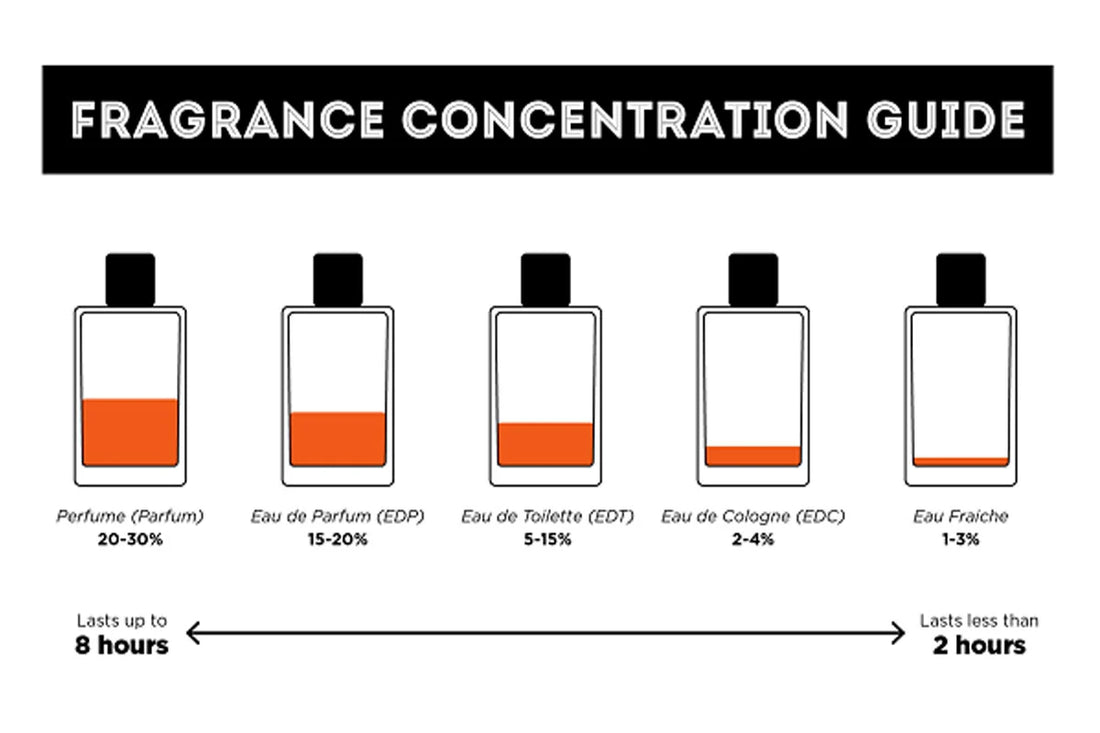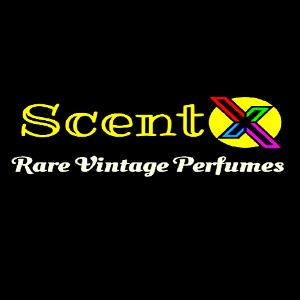
A Simple Guide to Concentrations in Vintage Perfumes: Differences Between EDC, EDT, EDP, and Parfum
Share
💎 Differences between Eau de Toilette, Eau de Parfum, Cologne, and Parfum: A Complete Guide to Concentrations in Vintage Perfumes
🧭 Introduction
In the world of perfumery, understanding the differences between Eau de Toilette, Eau de Parfum, Cologne, and Parfum is essential to fully appreciate the art of perfume, especially in the context of vintage perfumes. These classifications determine longevity, intensity, evolution on the skin, and collectible value.
📜 A touch of history: the origin of the concentrations
The classification of concentrations originated in Europe between the nineteenth and twentieth centuries. Originally, perfumes were pure extracts diluted in alcohol, with concentrations defined by hand. With industrialization, the industry began to standardize formulas.
-
🧴 Eau de Cologne : born as "Aqua Mirabilis" in the 18th century in Germany.
-
👑 Eau de Toilette : used by French nobles as a daily perfume.
-
🕯️ Parfum (or Extrait) : the most precious, reserved for special occasions or evenings.
📊 The main concentrations compared
| Fragrance Type | Percentage of scented essence | Average duration on the skin |
|---|---|---|
| 🌿 Eau de Cologne (EDC) | 2% - 5% | 1 - 2 hours |
| 🌸 Eau de Toilette (EDT) | 5% - 15% | 2 - 4 hours |
| 🌹 Eau de Parfum (EDP) | 15% - 20% | 4 - 6 hours |
| 🌌 Fragrance Extract | 20% - 30% | 6 - 8 hours (even more) |
📌 Note : In vintage perfumes, these concentrations may be more intense due to the quality of the ingredients and the maceration process.
📈 Chart 1: Olfactory preferences by age group
| Age range | Concentration preferences | Favorite note types |
| 18–25 years old | Eau de Cologne, Eau de Toilette | Citrus, marine, fresh notes |
| 26–40 years | Eau de Parfum, Eau de Toilette | Amber, floral, woody notes |
| 40+ years | Parfum, Extrait de Parfum | Oriental, leathery, aldehydic notes |
📉 Chart 2: Recommended use based on concentration
| Concentration | Recommended use |
| Eau de Cologne | ☀️ Summer, after shower, casual occasions |
| Eau de Toilette | 👔 Everyday, office, informal contexts |
| Eau de Parfum | 🌙 Evening, appointments, elegant events |
| Fragrance Extract | 🎩 Special occasions, important evenings |
🧠 How to choose the right concentration?
🔍 Context of use : For daytime or summer, an EDT or Cologne is best. For evening events, opt for an EDP or Parfum.
💪 Desired longevity : If you want a long-lasting fragrance, choose an EDP or Extrait.
🎯 Personal preferences : Lightness and freshness vs. intensity and depth.
🕰️ Vintage vs. modern: what really makes the difference?
Vintage perfumes, at the same concentration, are generally more intense than modern versions. Older formulations used natural ingredients and had fewer IFRA restrictions. A vintage EDT can last as long as a modern EDP.
🔗 Related insights
Discover olfactory families to better understand your ideal style: 👉 Complete guide to perfumery olfactory families
✅ Conclusion
Understanding the difference between Eau de Toilette, Eau de Parfum, Eau de Cologne, and Parfum is crucial for making an informed choice. The right concentration enhances every fragrance and every occasion.
💡 Discover our vintage collections now and find the perfect focus for you on ScentX .
